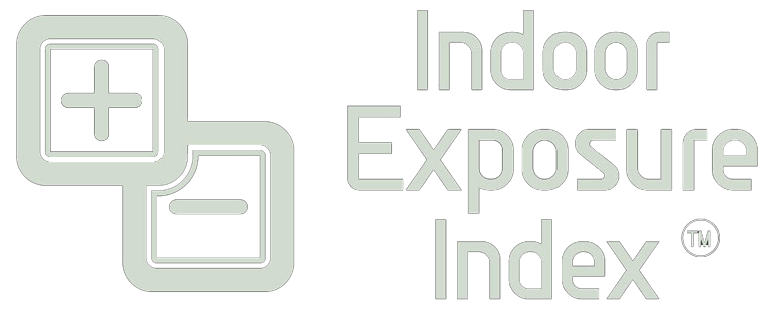[*501(c)(3) status pending IRS final approval]
In the modern world, indoor environments have become the primary setting for most people’s daily lives. From homes to workplaces, and schools to recreational facilities, we spend a significant portion of our time indoors. While indoor settings provide comfort and security, they also pose a variety of health risks due to the presence of pollutants and hazards. Given the complexity and range of these potential indoor contaminants, there is a pressing need for a standardized indoor exposure index. Such an index would serve to simplify public understanding and awareness of indoor environmental quality.


Indoor environments can harbor a wide array of pollutants, including volatile organic compounds (VOCs), particulate matter, mold, carbon monoxide, and formaldehyde, among others. These substances can originate from various sources such as building materials, cleaning products, heating systems, and even occupants themselves. For instance, VOCs are often emitted from paints, cleaning agents, and new furniture, while particulate matter can come from carpets, textiles, human skin flakes, and outdoor air infiltration.
The health effects of indoor pollutants are numerous and can range from minor irritations to severe chronic illnesses. Short-term exposure to high levels of indoor pollutants can cause symptoms such as headaches, dizziness, and respiratory issues. Long-term exposure, on the other hand, has been linked to more serious conditions including asthma, cancer, and cardiovascular diseases. Vulnerable populations such as children, the elderly, and individuals with preexisting health conditions are particularly at risk.


One of the primary benefits of an indoor exposure index is the simplification of complex and technical information. Most people are not environmental scientists and may find it challenging to understand the significance of various indoor pollutants and their concentrations. An exposure index would condense this information into an easily comprehensible format, similar to how the EPA Air Quality Index (AQI) does for outdoor air quality.
An indoor exposure index would also guide public behavior by providing clear and actionable information. For example, if an index indicates that the level of indoor particulate matter is high, individuals may be prompted to take measures such as increasing ventilation, using air purifiers, or reducing activities that produce particulates. Similarly, policymakers can use the index to establish guidelines and regulations aimed at improving indoor air quality in public buildings and residences.


The existence of a standardized index would encourage regular monitoring of indoor environments. Just as people check weather forecasts and outdoor air quality reports, they would be more likely to monitor indoor conditions if they have a simple and reliable index to refer to. This could lead to more proactive management of indoor air and environmental quality, reducing health risks and improving overall well-being.
The development and implementation of an indoor exposure index could stimulate technological innovation in monitoring and mitigation devices. Companies would have a clear target for the performance of air purifiers, ventilation systems, and other indoor air quality products. Companies that make cleaning equipment which remove bioload could apply a Bioload Exposure Index number based on multiple, averaged, cross-sampled ATP measurements for a simplified and more-defined Cleaning for Health program. This would drive advancements in technology that make it easier and more affordable for individuals to maintain healthy indoor environments.


An indoor exposure index for various pollutants and hazards is not only necessary but also highly beneficial. It demystifies the complexities of indoor air and environmental quality, guides public behavior and policy, encourages regular monitoring, and promotes technological innovation. As we continue to prioritize health and well-being, an indoor exposure index is a crucial tool in safeguarding the quality of the indoor spaces we live and work in.
